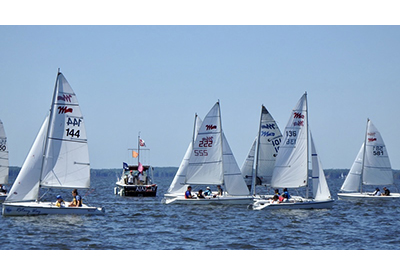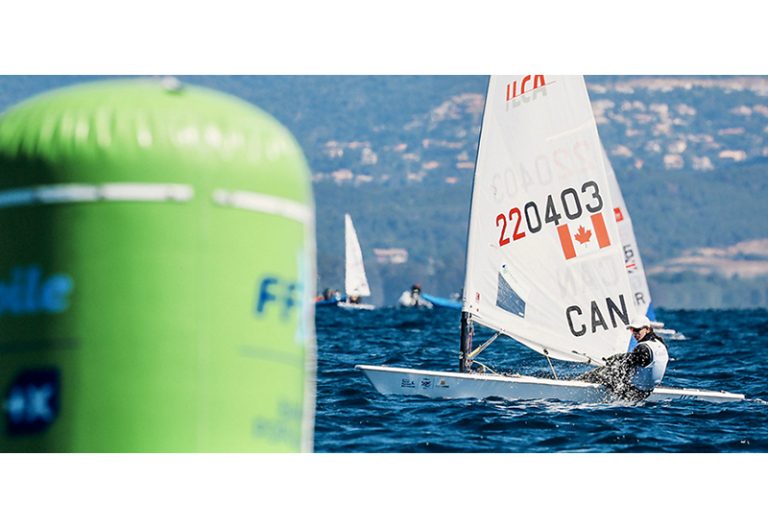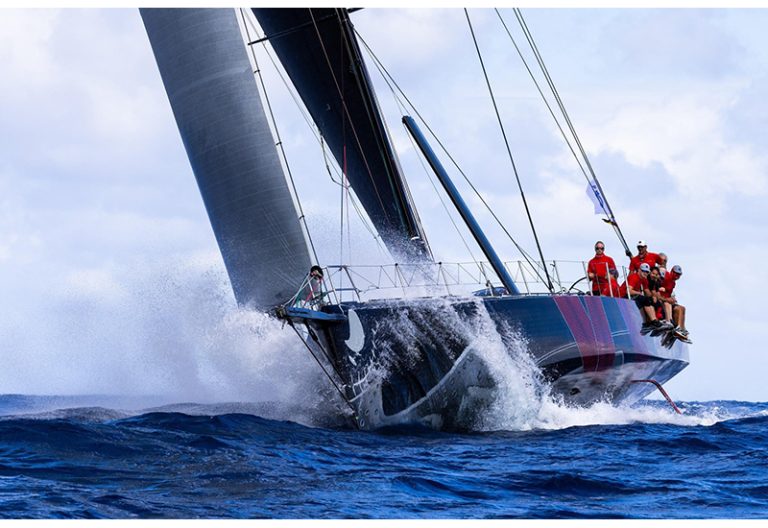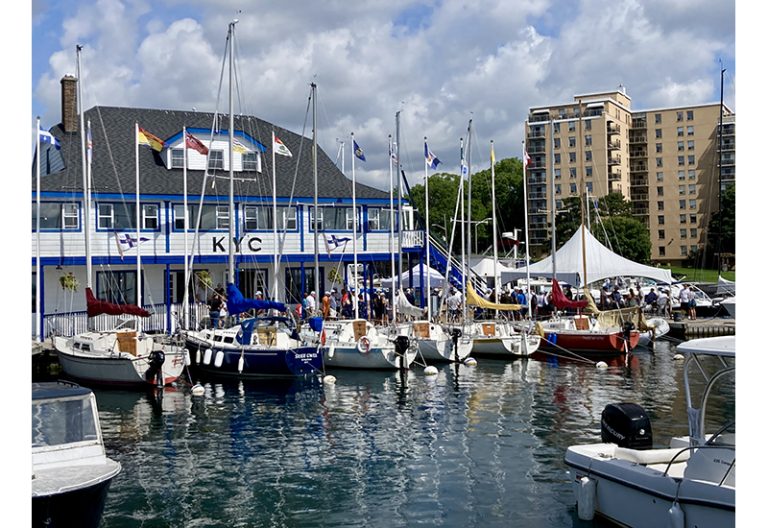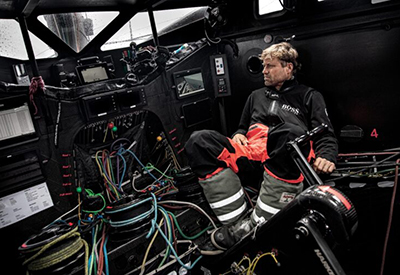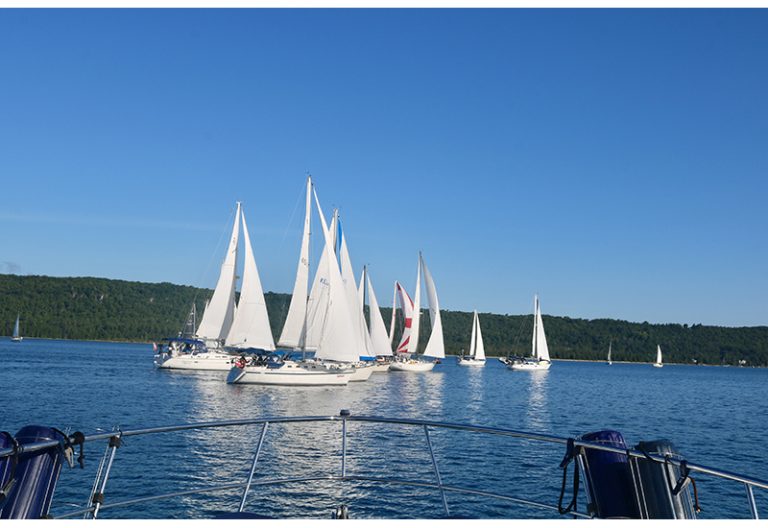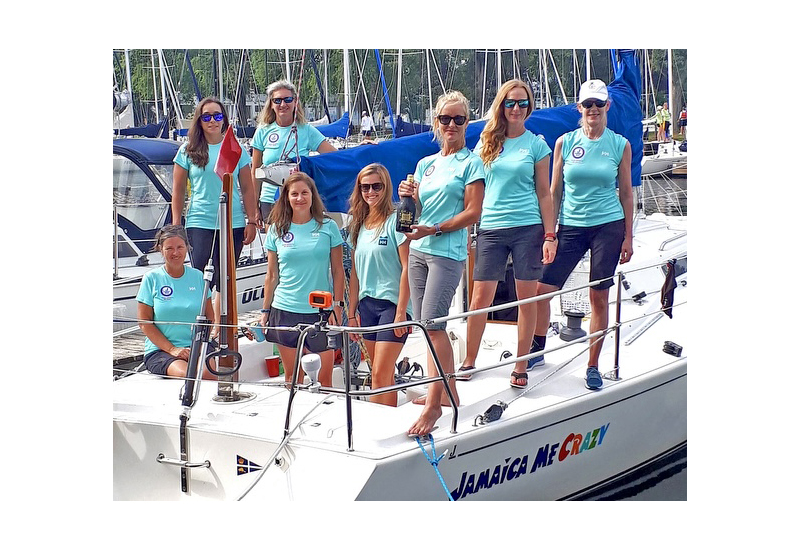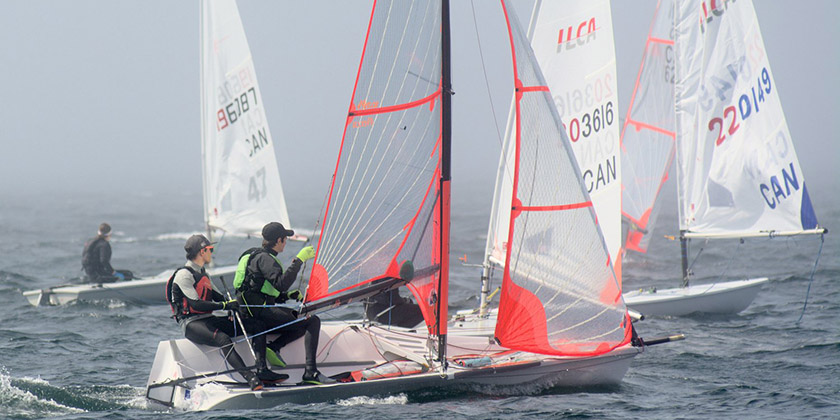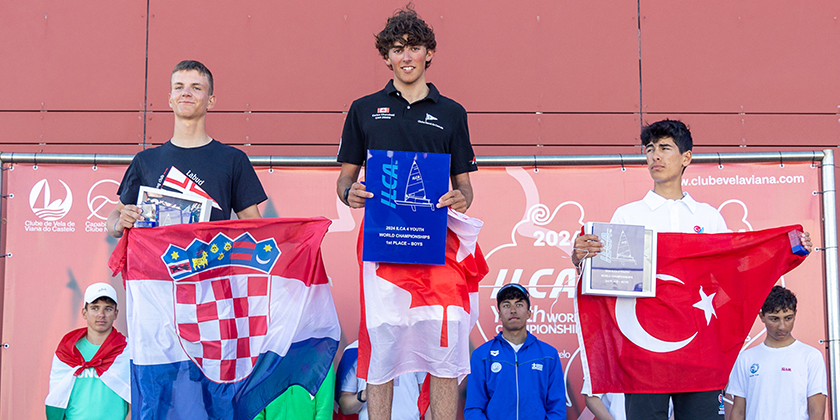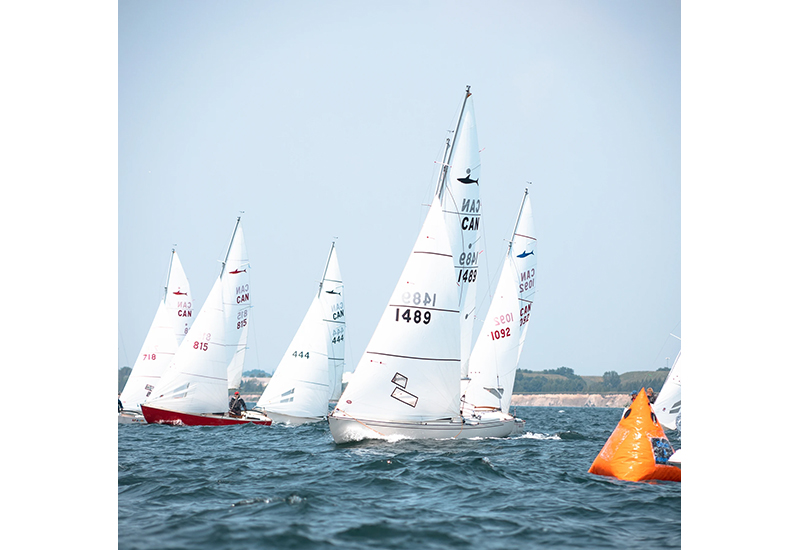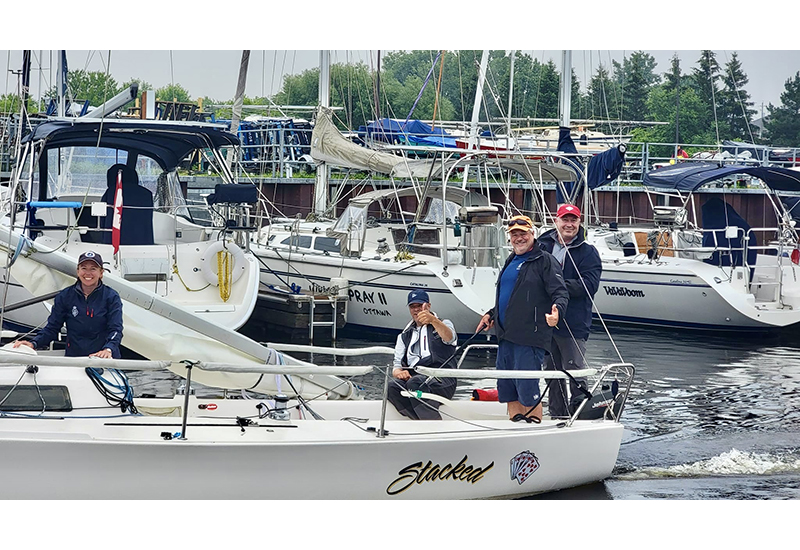New Boats at Dusseldorf May Come Our Way
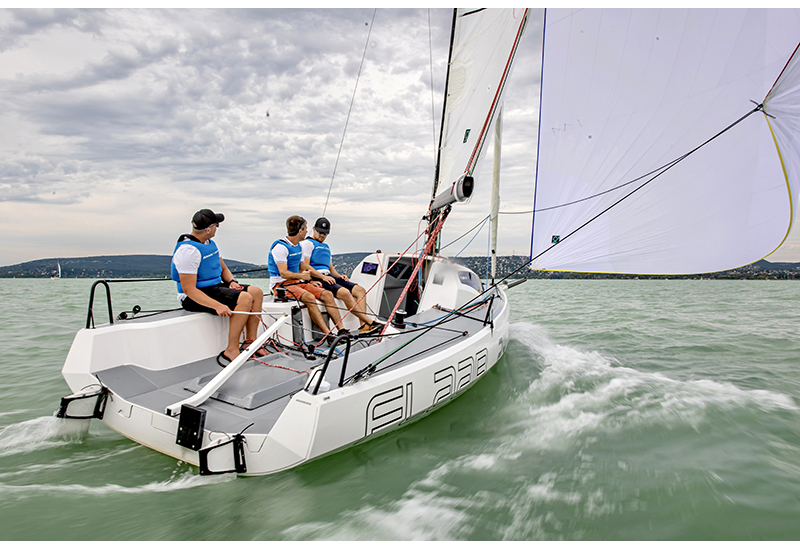
Jan 3, 2024
The Flaar 24 daysailer from Hungary
These days the boats that eventually come to Canada show up in Europe first, often at boot in Dusseldorf. It’s the largest show in Europe with two large buildings full entirely of new sailing models. Most of the nominees for the European Yacht of the Year 2024 (EYOTY – the Awards will be presented at a gala celebrated as part of boot) will be on display, several World Premieres and perhaps some that will never arrive on our shores from custom and high-end builders.
Arcona 50
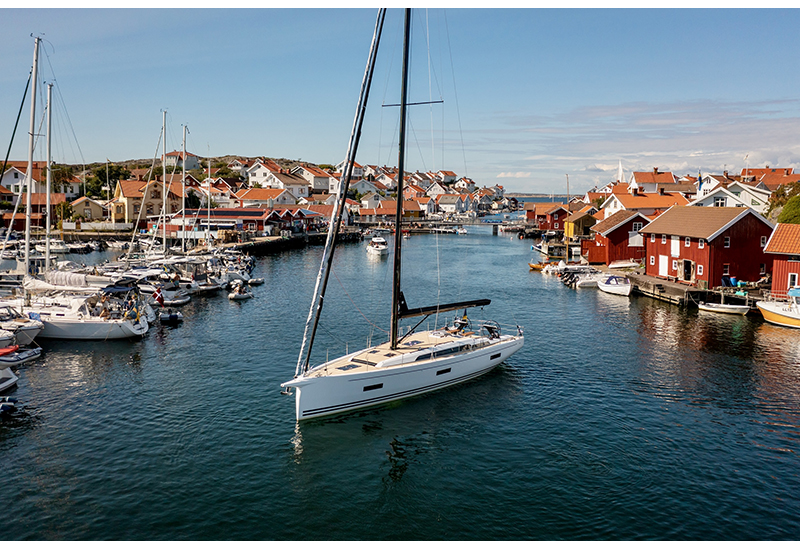
The Swedish shipyard has so far been successful in building conservatively styled, luxurious performance cruisers that are a delight to sail. By launching the new flagship, the yard left this traditional niche and entrusted one of the greats on the scene with the design, namely Niels Jeppesen. This is nothing short of a sensation as Jeppesen has exclusively worked for X-Yachts for more than 40 years and decisively shaped this brand. The star designer also left his inimitable mark on the Arcona 50, an elegant yacht with a very wide aft. She features twin rudders, a roomy aft garage that accommodates the dinghy crosswise and a three-spreader mast. Those who like it particularly sporty can bank on carbon fibre mast and boom or opt for an overlapping genoa instead of the self-tacking jib. Below deck three spacious double cabins and two heads make for conventional homeliness. This matches the U-shaped pantry, which can also be ordered as an open version with a state-of-the-art cooking island.
Arcona Yachts, Hall 16/B53
Bavaria C46
Launching the Bavaria C46 this shipyard from Southern Germany presents the third model in the line which was designed by Maurizio Cossutti and boasts excellent sailing abilities across the board. This also holds true for the C46: thanks to chines and a V-hull that widens over the waterline, she boasts high dimensional stability, and the single rudder ensures precise steering. In addition, the yacht scores points with plenty of room below deck accommodating up to five cabins. In view of the furnishing (double or single berths) as well as the layout of heads and separate showers the floorplan allows for various possibilities and solutions – catering to just about every need. The same applies to the deck layout which can be optimised for short-handed or sporty sailing or comfortable family cruising due to different positions and numbers of winches. The standard equipment includes self-tacking jib and fixed bowsprit for a gennaker or Code Zero, while additional wardrobe is housed in a sail locker between the anchor locker and the forward cabin – extremely handy!
Bavaria Yachtbau, Hall 16/B40
Oceanis 37.1
Launching this Marc-Lombard design, Bénéteau completes the revamp of the Oceanis line started in 2017. The striking chines running along the complete hull give this yacht a sporty look, improve its stability and provide for more room below deck. This is used for a long galley running along the side of the saloon – great because it provides ample worktops and storage space which is quite unusual in this class – as well as three double cabins with comfortably sized berths.
Bénéteau, Hall 16/B42
2023 EYOTY Winner First 36
The performance cruiser designed by Sam Manuard and built by Seascape in Slovenia was voted European Yacht of the Year in this hotly contested category in 2023. And for a reason: by introducing the First 36 a high-volume shipyard has succeeded in launching an extremely lightweight yacht that does without expensive high-tech materials. This was made possible primarily by Pure-Design, the laminate specialists who created a “strict diet” for reducing hull and deck weight, but also by designer Lorenzo Argento who followed suit paying attention to each gram for interior furnishing and styling. The result is an agile boat that is fun to sail in all conditions.
Bénéteau, Hall 16/B42
Contest 50 CS
The Dutch shipyard has installed a version with aft cockpit (Contest 49CS) and one with a centre cockpit on the hull by Judel/Vrolijk & Co. – the latter model being nominated for the European Yacht of the Year in the category Luxury Yachts. The cabin ending in front of the mast and the flat forecastle are reminiscent of a mega yacht while the interior is a class in its own right in terms of finishing, sound insulation and view to the outside. The central owner’s aft compartment comes across as extremely tasteful, the same applies to the bow VIP cabin.
Contest Yachts BV, Hall 16/C54
World premiere Dufour 44
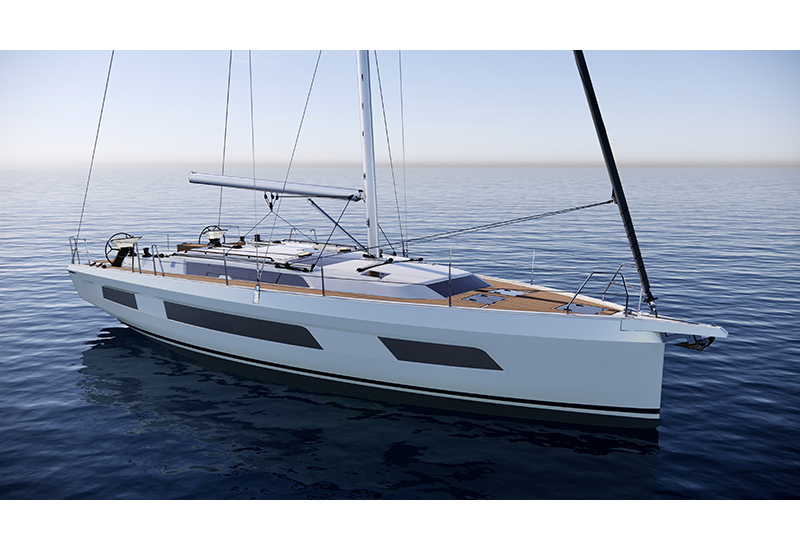
With this yacht the current line comprising Dufour 37 and 41 is upgraded; in Umberto Felci the shipyard found a long-term partner for her design. He designed a tidy deck with two to six winches in the cockpit, for the wardrobe overlapping genoa or self-tacking jibs are available for choice. If the yacht is to be chartered, it can score points with four double cabins with ensuite heads – which has never been available in this length segment before. The owner’s version comes with three comfortable cabins and various versions and combinations for head design. Owners are also spoilt for choice when it comes to the pantry: a long galley with plenty of storage room extended along the side of the ship or a compact pantry positioned against the main bulkhead. Very appealing and a real innovation is by all means the hexagonal dining table seating up to ten persons in the salon.
Dufour, Hall 16/B39
Dufour 41
Two double cabins in the bow – this is an absolute novelty in this length class – and was only made possible because designer Umberto Felci drew a hull with a maximum width of 4.30 m and super rounded bow “nose”. But the Dufour 41 does not taper much towards the aft either, which makes not only for more volume on and below deck but also high stability and excellent hydrodynamics. So a win-win situation. The cockpit is huge, the saloon rather small, while for the furniture, buyers can choose between oak or teak, both in real wood veneer. The super inviting atmosphere is due to the numerous hatches and windows that allow in plenty of daylight.
Dufour Yachts, Hall 16/B39
Elan Impression 43
The hull of this model, marking the start of Elan’s total re-pitch of its cruising line, comes care of Humphreys Yacht Design and, hence, the shipyard’s in-house designer. For the styling the Italian studio Pininfarina was enlisted for the second time. Its signature design is visible in the wood veneer with near-nature knot holes used for the furniture, producing a very special effect. Beyond this, no experiments are made. This cruising yacht targets the high-volume charter owner and/or charter operators’ market banking on proven lines.
Elan, Hall 16/D57
Flaar 24
This daysailer from Hungary, from Lake Balaton, to be precise, was designed as a multi-purpose vessel. With a weight as low as 750 kg and a width of only 2.53 m, it is great for trailing and boat slips thanks to its canting keel. Built in 100% carbon, with a carbon rig and a high-performance, fully battened square-top mainsail it is fit for challenges; whoever wants to cruise with it will find four sleeping places below deck and room for a cool box and a chemical toilet for additional comfort on board. Sounds like a companion for all situations.
Flaar, Hall 15/C39
World premiere Hallberg-Rassy 69
The tradition-rich Swedish shipyard, still 100% family-owned, has been synonymous with seagoing bluewater yachts for 80 years now. The new flagship with a hull length of 21 m is the largest model ever built in Ellös and targets the absolute luxury segment. Striking at first sight: the completely clean and flush deck in front of the mast as well as the unusually large but very well sheltered centre cockpit, accommodating two helm stands, two L-shaped sofas as well as a large cockpit table; a fridge can also be installed optionally. The rigid windshield typical of Hallberg-Rassy is a must, with a hardtop available as an alternative. Despite her size this yacht can also be handled easily and safely by a small crew and/or single-handedly since the sails are set and trimmed electrically and/or electro-hydraulically by push buttons at the control panels. The interior of the 46-ton yacht is located on one single level, while eight hull portholes as well as various hatches provide plenty of daylight and great vistas. There are two layout versions with different locations of cabins and heads, interior furnishings come in Khaya mahogany as a standard. The look is maritime, its finishing top-class – a Rassy through and through.
Hallberg-Rassy, Hall 16/B58
World premiere Moody 48DS
DS stands for Decksaloon and this means plenty of sheltered space and high living comfort. Introducing its latest model, Hanse Yachts has really gone to extremes with this approach: the walkaround deck with high bulwarks and rigid guard rails ensures safe handling also in rough seas while the cockpit roofed and located flush with the saloon offers unobstructed 360° views. The invented term “monomaran” preferably used as a title for Moody models really hits the nail on the head here, as this 48-foot yacht fuses the benefits of catamarans with those of mono-hulls.
Hanse Moody Dehler, Hall 15/A20
Hanse 410
Since 2021 this German shipyard has cooperated with Berrett-Racoupeau engineering and the 410 is the third model created by them. In terms of styling she clearly follows on from the Hanse 510 and 460 (also to be exhibited at boot). The hull width is enormous, the soft chines run along the entire length of the ship and the wetted surface is low, especially towards the stern. All trim lines are led to the steering wheels, for the cockpit you can have two separate tables instead of one centre table on demand. The interior layout can optionally feature two or three cabins.
Hanse Moody Dehler, Hall 15/A20
Pointer 30
This smart weekend sailer hails from the Dutch Heeg shipyard and has her sights on low-wind inland waterways rather than stormy seas. The already slim hull tapers strongly towards the aft and bow; this means the wetted surface is reduced providing the yacht with a nice speed even in a light breeze. Below deck, the space available is naturally limited and the berth in the forecastle narrow. The two aft sleeping places, by contrast, are relatively comfortable; the saloon is equipped with two swivel armchairs and a sofa.
Jachtwerf Heeg, Hall 16/C06
Jeanneau Yachts 55
Thrilling, polarising, innovative – connoisseurs come up with many attributes for this yacht developed by Philippe Briand and Studio Winch Design. They all underline the courage shown by this French large-series shipyard – which forms part of the powerful Bénéteau Group – when designing this exclusive cruising yacht. The 55-footer has little in common with her already existing 60 and 65-foot sisters; she surprises us with a fundamentally different concept as well as details we have not seen with competitors yet. The giant, flush cockpit, for example, is divided up into three areas: there is an aft access to the swim platform as well as a spacious lounging area, which either serves as a sun pad or can be converted into L- and U-shaped seating with tables. Positioned in front of this are the steering wheels plus winches, even further towards the bow a bench as well as an open air (!) chart table with GPS plotter and auto-pilot control system. The standard arch across which also the main sail is trimmed, forms the basis for a shading system which can be ordered in a textile material or in a combination of a fixed windshield and hardtop. The interior has also been completely re-invented. The central companionway leads to the saloon with an L-shaped galley and dining area as well as to the main compartment with a very generous bathroom. The two aft cabins with double beds and ensuite bathrooms, in contrast, can be reached via a separate access located right in front of the steering wheels. Thanks to this consistent spatial separation maximum privacy and sound proofing was achieved for both the owners and their sailing guests. Alternative layouts are not offered – thereby stating as clearly as can be how convinced the shipyard is of this extraordinary layout.
Jeanneau Sailing Yachts, Hall 16/B18
Maxus 35
The Polish shipyard Northman has built its image on solid cruising yachts. With this model it now ventures into the highly competitive beginner’s league of boats around 10 metres. Her hull with hard chines in the aft, a deck sloping upwards and the deckhouse with its striking long, black porthole all create a distinctive exterior while the classic deck layout with six winches should provide no reason to complain. The Maxus 35 is available with either a canting, lifting or fixed keel and can therefore fall dry. Her standard layout features two cabins and a large head with separate shower. Optionally, three cabins are possible at the expense of a reduced head.
Northman, Hall 15/B40
RM 1380
In 2020 the shipyard was taken over by the Grand Large Yachting Group and the 1380 care of Marc Lombard is the first model of this new era. Wood hardly features in its interior where snow white surfaces dominate. Like all RM boats, the RM 1380 comes with GRP decking and a chine keel for falling dry without problems. She can be optimised for performance sailing, cruising or as a bluewater model. For long cruises she can be equipped with a davit, solar panels or a dodger and have a workshop and/or walk-in aft storage box installed instead of a double cabin.
RM Yachts, Hall 16/D40
Saffier Se24 Lite
Her big sisters Saffier 27 and 33 have already won an EYOTY Award and this smart daysailer, that is almost as easy to sail as a dinghy, definitely has everything it takes to follow suit. The negative bow stem gives the Se24 an ultra-modern look and her high sail carrying capacity gives her excellent sailing characteristics in light winds. The deck layout is well thought-out and functional, the interior finish very clean. There is no headroom for standing below deck but the sailboat sleeps four.
Saffier Maritiem, Hall 16/D53
Innovation Sunbeam 29.1
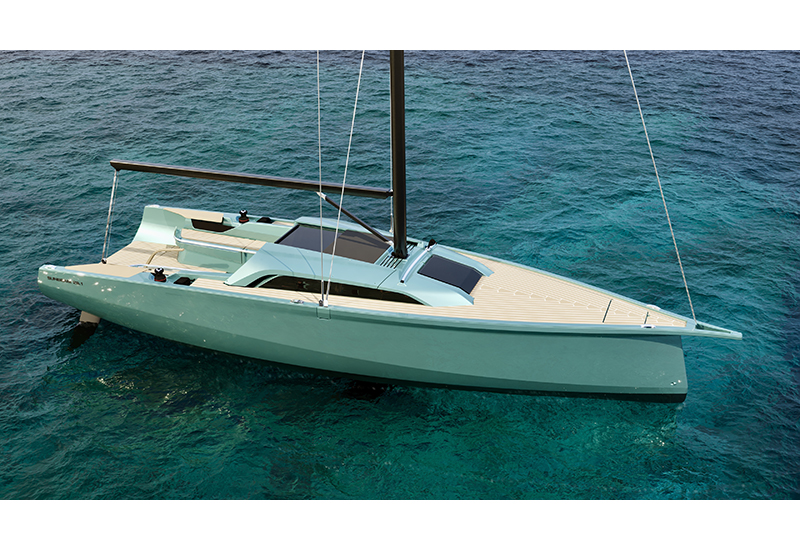
Based at Lake Matt in Austria, this shipyard presents a brand new model, which – like the polarising Sunbeam 32.1 that was launched three years ago and caused a stir in the industry – was developed in cooperation with industrial designer Gerald Kiska. She comes across as considerably more conventional than her revolutionary sister, offers no conspicuous features at first sight and should therefore appeal to a broader target group. The canting keel can be lifted hydraulically thereby reducing the draft to 0.85 m, the twin rudder is operated by a tiller. Maximum openness prevails below deck, pantry and head are available are extra modules. These can be ordered and installed as optional furnishings ex-factory or retrofitted when the family situation changes or a sale is considered.
Sunbeam Watersports, Hall 16/D17
X-Yachts – heeling already simulated using a model
“We want to mark the beginning of a new age of bluewater yachts!” With these words X-Yachts CEO Brinck Nielsen set the bar pretty high for this newcomer. She is the first model of the new Xc series and the first yacht with a semi decksaloon ever built by this Danish shipyard. Simplicity, safety and easy handling also for small crews ranked at the very top of the briefing for the in-house design team. As a result, amongst other things, all trim lines – also the lines of the slightly overlapping genoa – were laid in channels under the deck to the steering positions, allowing the helmsman to easily operate them on his own. The stern was redesigned while the hull lines are typical of X-Yachts (deep V-shaped bow, high stern overhang) and account for the fine seagoing characteristics. Also retained was the integration of the steel frame in the floor assembly to reinforce the hull structure. Speaking of hull reinforcement: carbon was used for heavily loaded areas such as the keel, rudder or chain plates – what a reassuring feeling. Another interesting detail worth mentioning as part of the yacht design the shipyard not only built a conventional mock-up, i.e. a true-to-size model but it was also heeled over. In this way the heeling effect in sailing could be simulated and all systems on and below deck subjected to trials under realistic conditions. An unprecedented process so far in yacht building that testifies to the serious, meticulous, and innovative approach of those at X-Yachts responsible for this project.
X-Yachts, Hall 15/A24

